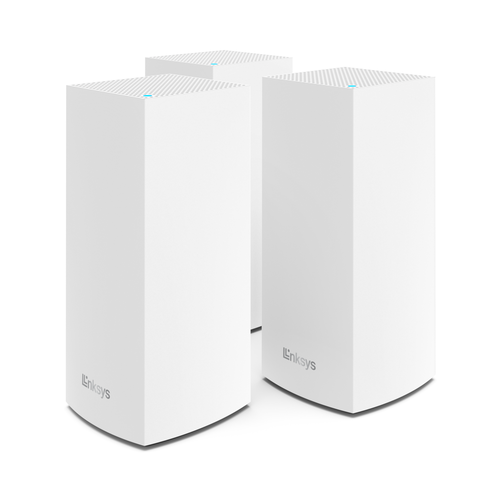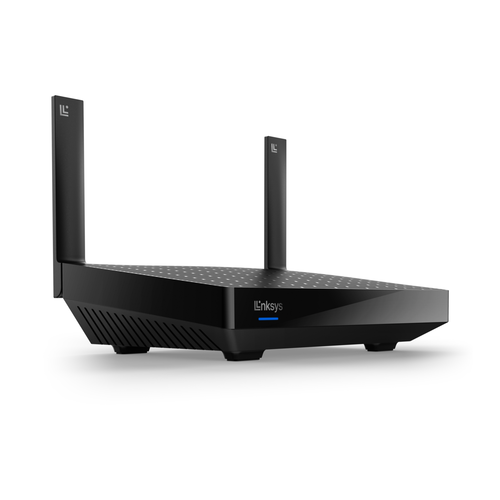What Is AX?

In the almost two decades since the first 802.11 wireless standards were introduced, five general-purpose WiFi standards have emerged: 802.11a, 802.11b, 802.11g, 802.11n, and 802.11ac. With each new standard, progressively faster WiFi speeds were introduced. Now a new standard is here, dubbed 802.11ax (11AX), that focuses on improving WiFi performance in environments with a high amount of data traffic and overlapping networks.
Increasing Speed and Capacity
If you've ever tried to access WiFi at a concert or in an airport, you're already aware of the limitations of WiFi in particularly dense environments. Essentially, an overabundance of users trying to pull a wireless signal simultaneously creates too much stress on the network, resulting in decreased performance and signal instability. 11AX tackles this issue, offering a better system for routing the data where it needs to go.
The focus of previous wireless standards was mainly to achieve maximum theoretical speed. Building upon the most recent wireless standard, 802.11ac, which broadened multi-antenna capabilities through multiple input multiple output (or MIMO), 11AX further divides the frequency band into multiple channels using a technology called OFDMA (or "Orthogonal Frequency Division Multiple Access"). As a result, 11AX can significantly increase wireless speeds and better manage network capacity, especially with heavy traffic and overlapping networks.
How Fast Is 11AX?
Comparatively speaking, the maximum speed of a single 802.11ac stream is roughly 866Mbps, whereas a single stream of 802.11ax is 1.2Gbps (that's gigabits). That means streaming Ultra-HD 4K video with zero lag, downloading entire software packages in the blink of an eye, and incorporating an entire family of smart devices.
The speeds you'll realize, of course, depend on the network and the equipment set up on it. A large, enterprise network in a massive corporation – on that has an already-powerful signal already – will naturally see much higher speeds than those networks typically found in less dense residential or small business environments. Either way you deal it, though, you'll notice an increase of about four times the current signal, which amounts to a significant bump in total network capacity.
The bottom line on speed? In addition to improving efficiency and coverage, 11AX is engineered to increase capacity of both 2.4 GHz and 5 GHz bands in a variety of environments, from homes to schools, businesses to airports, stadiums, and more. It doesn’t really matter what you’re starting with; garnering a connection that’s four times your current speed is going to make a noticeable difference in your online experience.
How Efficient Is 11AX?
Speed isn't the only factor, however. 11AX is also focused on implementing mechanisms that serve a consistent and reliable stream of data to more users. That means an increase in efficiency and on maintaining connections, even when network congestion is heavy. The key issue here that 11AX addresses is interference. As more devices become connected in densely covered areas, congestion significantly slows the network. Users might experience co-channel interference, a degradation of performance, and none of the expected gain from wider channels. The 11AX standard operates on both the 2.4GHz and 5GHz bands, preserving existing channel bandwidths and prioritizing network capacity and how data is transferred to multiple devices.
11AX also supports Orthogonal Frequency-Division Multiple Access (or OFDMA), a technology designed to improve the capacity of mobile LTE networks. In its current application, every time a router sends information to a device, it uses all the bandwidth in the channel, regardless of the type of data or how much information is actively being transmitted. With OFDMA, these channels can be split up, thus increasing the amount of data that can be sent and received simultaneously. Additionally, the new 11AX standard allows you to schedule “awake” times when communication is permitted (thus reducing power load). It supports 1024QAM encoding, which means that more information bits can be transmitted per symbol (or pulse) and it also supports long OFDM symbols for greater channel bandwidth and less interference.
Features and Benefits of 11AX
Most WiFi users understand that a multitude of connected devices strains a network, causing bottlenecks, slowdowns, buffering, and drop-outs. The new standard, which is also called High-Efficiency Wireless (HEW), provides the next level of WiFi management. But how does 11AX compare to its predecessors, and how will it deliver the WiFi network of the future? The standard includes the following key features:
- Backwards compatibility with previous wireless standards (802.11a/b/g/n/ac)
- Operation on both the 5GHz and the 2.4GHz bands (instead of one or the other, as in previous standards)
- 2/5/10MHz channel width for longer range than 20MHz
- Increased throughput and efficiency
- 1.5 times faster than 802.11ac
- Up to 3.8 times faster than 2.4GHz on 802.11n
- More throughput in high density outdoor (like sports stadiums) or indoor (movie theater) environments
- Up to eight times faster than non-MU-MIMO products thanks to up link and down line (DL/UL) MU-MIMO
- 20 percent more airtime from the router, which means more data can be transferred
- Improved traffic flow and channel access
- Better power management for longer battery life
- BSS coloring – in other words, each network in a multi-network location is assigned a color so it’s easier to differentiate – means each AP can avoid the interference when they see each other APs in the different color
Putting It into Action
Because it improves the average data throughput per user, the 11AX wireless standard is best for high density environments such as apartments, condominiums, multi-dwelling buildings, and campuses. When multiple users’ devices are connected to the same network, they're forced to compete for available resources and transmit data sequentially, one at a time. Thanks to 11AX, multiple devices can simultaneously transmit data, using the same radio frequency and the same network.
When it comes to 11AX, it’s not just bumping the speed of the network itself. It’s improving performance and solving the problems caused by overcrowded, congested WiFi networks. If your WiFi already feels slow, even when you know your Internet connection is more than adequate, 11AX can be a critical upgrade.


